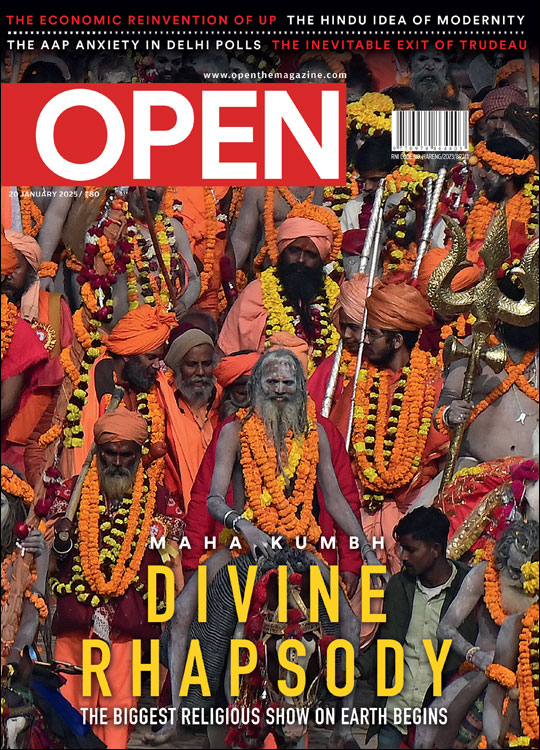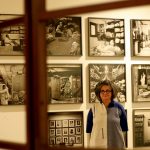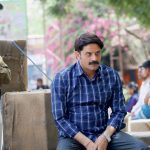India’ First Art Nursery
As India’s most iconic art gallery turns 60, the story of how it shaped and reshaped Indian art
 Lhendup G Bhutia
Lhendup G Bhutia
 Lhendup G Bhutia
Lhendup G Bhutia
 |
04 Oct, 2012
|
04 Oct, 2012
/wp-content/uploads/2015/11/nursery-2.jpg)
As India’s most iconic art gallery turns 60, the story of how it shaped and reshaped Indian art
As the story goes, or as how current chairman of the Jehangir Art Gallery, Adi Jehangir, recollects, his grandfather Sir Cowasji Jehangir, founder of the gallery, once almost abandoned the idea of building such an art space. Cowasji, a prominent member of the Parsi community who attended the second Round Table Conference in London, though a collector of traditional Indian artworks like Chola bronzes and miniature paintings and art pieces made during the Mughal period, wasn’t particularly fond of modern Indian art. So when the original estimate of Rs 2.5 lakh to build the gallery was breached, and the gallery was still far from complete, he was entertaining thoughts of stopping work.
He voiced this feeling to Karl Khandelwal, a famous art collector and lawyer in Bombay. Khandelwal took Cowasji across the street, from the site of the gallery to what is now Ador House. “There in one of the rooms were a number of young men. Not only was the room too small, there was water leaking from various corners. The men were all artists, and despite the rain, were working on what would later be their masterpieces,” recalls Adi, whose father Hirji Jehangir told him the story. “Pointing to the artists, Karl told my grandfather, ‘This is why we desperately need space’.” MF Husain and KH Ara were among the artists gathered there that day.
If he had any doubts about continuing to fund the building of the gallery, he never voiced them again. And in 1952, Jehangir Art Gallery, created on a plot that was once a pond belonging to the Prince of Wales Museum, was complete. It cost Cowasji a total of Rs 7.09 lakh.
Now, 60 years later, the gallery is being rebuilt, so to speak. The flooring is being redone, air-conditioners are being mounted and more lights installed. The gallery is set to celebrate its Diamond Jubilee from October 17 to 27. And to do so and generate more funds, a number of events are being organised—an art auction, musical events, fashion shows, exhibitions of historical images, sales of memorabilia, art talks, etc. All of this, as Adi Jehangir puts it, “to modernise ourselves and remain as relevant as we were six decades ago”. Within two days of his contacting artists for the auction, as many as 60 artists, or families of those who had passed away, were ready to auction their works to help out the gallery.
It is not without reason. The gallery has played an important role in the development of the city’s art, if not Indian art itself. It took artworks from the cloistered settings of small viewing spaces—where only few individuals of taste ever saw it—to the masses. With time, as art, art trends and sensibilities shifted and evolved, and installations and mixed media started to find as much currency as paintings, the gallery continued to hold on to its pre-eminence. Even today, with many private galleries in the city and with at least 300 exhibitions being mounted at the venue every year, artists have to wait for a minimum of two years to exhibit their works here. Such is the demand to get works exhibited at the Jehangir Art Gallery (Jehangir, for short) that the gallery has already started taking requests for 2019.
When it was first opened to the public—with an exhibition of the Bombay Art Society held in January 1952—it was the only largescale exhibition space for contemporary art in Mumbai. It was here that members of the influential Progressive Artists’ Group showcased much of their work. This group, which had stalwarts like Francis Newton Souza, SH Raza, MF Husain, Manishi Dey, and later SK Bakre, Akbar Padamsee, Ram Kumar and Tyeb Mehta, disbanded soon after the gallery was set up and moved to other parts of the world, but they, along with later artists, continued to exhibit their works at the gallery.
It was only in the early 1960s, as the well-known art critic and curator Ranjit Hoskote says, that Mumbai’s first professional private galleries were set up—Kali Pundole’s Pundole Art Gallery in Flora Fountain, Kekoo Gandhy’s Gallery Chemould in Princess Street and later at Kala Ghoda, and the Roopa Art Gallery at the Taj.
‘The members of the Progressive Artists’ Group and their associates showed primarily [at Jehangir]—though also, of course, with the private galleries with whom they worked—from the 1950s till the 1990s. During these five decades, Jehangir was a major venue and stage for the dialogues, relationships, friendships, rivalries and evolving careers of several generations of Indian artists,’ Hoskote says in an email interview.
The need for an exhibition space for modern art was being felt as early as in the mid 1940s. But this was also the time of World War II and the final decade of India’s independence movement. Nothing materialised until the late 1940s, when Cowasji decided to finance such a gallery. He was persuaded by influential art connoisseurs of the time—people like Albert von Leyden, his brother Rudy von Leyden, who was an art critic for The Times of India, and Homi Bhabha. It was to be originally built in another part of South Mumbai, where the Lady Ratan Tata Medical Centre now stands. But Cowasji, who was then one of the trustees of the Prince of Wales Museum (now called Chhatrapati Shivaji Maharaj Vastu Sangrahalaya), had a better idea. The large pond in the museum’s compound was drained out and the gallery built upon it.
Adi, the gallery’s third chairman after his father and grandfather, was never particularly interested in art. The 56-year-old reluctantly became a member of the gallery’s board of trustees and afterwards its chairman, and only later started collecting artworks. Father Hirji, however, was “a voracious art collector”. He was deeply interested and always buying works by Husain and Ara.
“And then one day, when I was still a young child, he announced—‘I am not buying anymore. Have you heard anyone shell out Rs 1,000 for their pieces?’” Adi remembers his father telling the family. Hirji had bought most of their works for what are now modest sums, between Rs 200 and Rs 300. Some years ago, the family moved out of their bungalow on Napean Sea Road, and took up a smaller apartment. With not enough space to mount them in the new apartment, a lot of these paintings were donated. Now, they own only 22 Ara pieces, one Husain, and a few by other artists.
“I have met Husain a number of times, but my first recollection of meeting him was when I was a young boy. I was never interested in art like my father. So I remember going to Jehangir not to see his exhibition, but to see the car he was travelling in. It was a Fiat that he had painted. And everyone was talking about it,” says Adi.
Like Adi, Jehangir is deeply etched in many memories. Husain was among the institution’s most enigmatic figures. He once held an exhibition in late 1991. Everyone flocked to Jehangir to see his latest work, Shvetambari: White is Super-abundant. However, many were shocked to find that the work on display was a floor strewn with sheets of newspaper and walls covered in white fabric. According to one rumour, the painter had been unable to finish the work on time. Hoskote, who was then reviewing the show for The Times of India, disagrees. ‘No,’ he says, ‘it was quite deliberate. It wasn’t that he’d been unable to complete the show on time, absolutely not. If he wanted to, he could have filled that space with paintings in eight hours. Shvetambari was a statement, a gesture.’
It was at this very exhibition that a chance encounter led to a lasting friendship for Hoskote, when he met Baiju Parthan, now considered a pioneer of intermedia art in India. ‘I was sitting on the floor, at the very end of the space, making notes for my review for The Times of India, and had shaped some of Husain’s newspaper sheets (also The Times of India) into a mock-crown. That’s when this polite, dignified, very well turned-out person [Parthan] came up to me and said, ‘Are you Ranjit Hoskote?’ To this day, I maintain that I answered pleasantly in the affirmative, while Baiju holds that I looked up at him with youthful arrogance (I was 22),’ he recalls. Baiju then worked as an editorial artist for The Illustrated Weekly of India and Science Today. ‘So Jehangir was the perfect stage for the beginning of what went on to become a lasting friendship and collaboration.’
Like Hoskote and Baiju Parthan, Jehangir has been at the heart of various friendships between artists. Located at the epicentre of Mumbai’s art district, Kala Ghoda, it has also nurtured the early aspirations of many now-celebrated artists. Hoskote, who calls the gallery ‘a part of the texture of my growing up’, would go to Jehangir, and other galleries like Chemould and Pundole, with occasional forays into Coomara swamy Hall, Max Mueller Bhavan’s Stuttgart Hall and the NCPA, with his parents. ‘When I finished school and went to Elphinstone College, Jehangir became firmly a part of my personal cosmos, with Café Samovar (at Jehangir) playing as important a role as the exhibitions,’ he says. Here, and also at poet-critic Nissim Ezekiel’s office at the PEN, he first met a number of artists who were to become his friends, among them Sudhir Patwardhan, Vivan Sundaram, Akbar Padamsee, Tyeb Mehta, Atul Dodiya, Baiju Parthan and Krishnamachari Bose.
Dodiya, now a celebrated contemporary Indian artist, considers the gallery an important venue for his development as an artist. He started visiting the gallery on his own when he was 11 years old. His father, a civil contractor, held an office on Rampart Road, and while his father would be busy at work, Dodiya would while away his time at the gallery. The artist then lived in Ghatkopar, but sensing his enthusiasm, his father bought him a first-class local train pass till Victoria Terminus, so he could visit Jehangir whenever he wished. Dodiya was 13 at the time.
“By the time I became a student of Sir JJ School of Art (also located nearby), this area had become like a second home. All of us young aspiring artists would go to Jehangir for exhibitions, and later discuss the works. We didn’t have enough money then to sit at Café Samovar, but when we became artists, these conversations moved there,” Dodiya remembers, recollecting how various exhibitions made a deep impression on him. Among them he cites a retrospective of Akbar Padamsee’s works and those by Tyeb Mehta. “When I was growing up, the likes of Husain were already established names. Jehangir introduced me to the next crop of big Indian names, like Vivan Sundaram and Nilima Sheikh,” he says.
His first two exhibitions (part of group shows) were exhibited at the venue. His first work (a painting titled Octopus) was exhibited during an Art Society of India’s anniversary celebration, where he won the first prize. Later in 1981, during the monsoon season—when there is a lull in the local art circuit and very few works are exhibited—his work was again exhibited as part of a student show. “Showcasing works here was an honour. And often the other galleries were too expensive for new artists to exhibit their works,” he says.
The inspiration remained the same even decades later. Contemporary artist Jitish Kallat, who graduated from Sir JJ School of Art in 1996, remembers spending much of his youth at Café Samovar, sharing space with other artists and strugglers. “We would study at college, discuss art at Jehangir, and carry on the conversation at Café Samovar. This place was extremely important for us aspiring artists, to sit with other accomplished artists, make their acquaintance and learn from them,” he says.
However, over the past few years, as more private galleries have sprung up, most accomplished artists have stopped exhibiting their works at Jehangir. It is now mostly newcomers or less-known artists who show here. While openings of exhibitions at private galleries are almost certainly accompanied with wine and cheese, those in Jehangir are at best celebrated with soft drinks and occasionally a few wafers, when the artist can afford it. Adi, who sometimes drops by at these openings, recently went up to a young artist from Nashik who was showing his paintings at Jehangir.
Thinking the artist must have come to Mumbai to establish himself as an artist, Adi asked him of his plans. “He said he would return home as soon as the exhibition ended: ‘I came here only to get an exhibition at the Jehangir Art Gallery. Now, when I return home, they will recognise me as a ‘true’ artist.’”

/wp-content/uploads/2025/01/Cover_Kumbh.jpg)











More Columns
The lament of a blue-suited social media platform Chindu Sreedharan
Pixxel launches India’s first private commercial satellite constellation V Shoba
What does the launch of a new political party with radical background mean for Punjab? Rahul Pandita